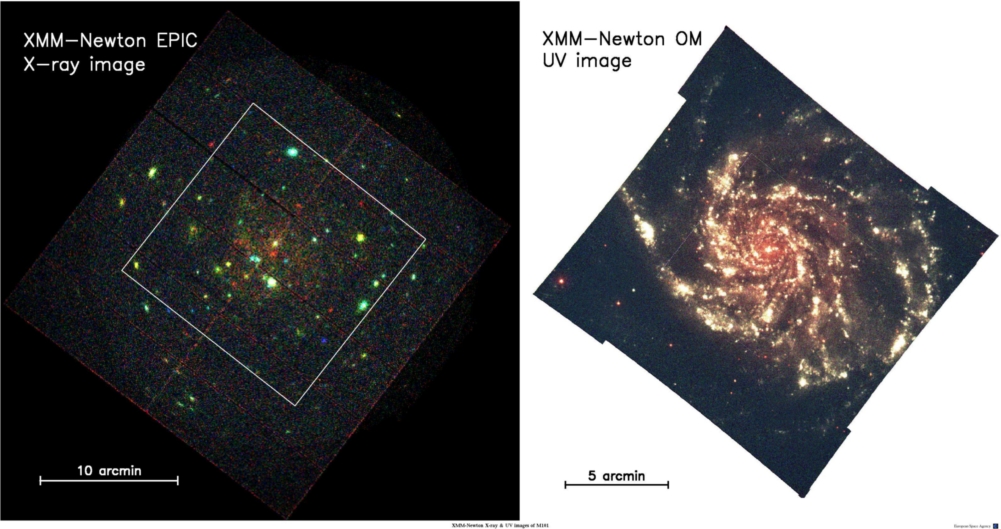
 Credit: L.P. Jenkins et al., 2004; ESA
Credit: L.P. Jenkins et al., 2004; ESA
Two Sides of M101
Spiral galaxies (like our own Milky Way) contain many different types of X-ray sources: individual stars, a nucleus (at some level of "activity"), individual hot nebulae and diffuse hot gas covering wide regions. Some of these sources are rather mysterious "ultra-luminous X-ray sources" (ULXs) which are so bright they can't possibly hold themselves together if they are neutron stars. After locating sources in X-ray images, astronomers use optical or ultraviolet images to positively identify the counterparts. Since the XMM-Newton X-ray observatory comes equipped with its own optical telescope (called the Optical Monitor) it's especially efficient at finding and identifying galactic X-ray sources. A beautiful example are the above
X-ray and ultraviolet images of the supergiant spiral galaxy M101. Comparison of the x-ray and optical images help astronomers understand the relation between different types of X-ray sources and to find out the location of especially interesting sources, like black holes.
Last Week *
HEA Dictionary * Archive
* Search HEAPOW
* Education
Each week the HEASARC
brings you new, exciting and beautiful images from X-ray and Gamma ray
astronomy. Check back each week and be sure to check out the HEAPOW archive!
Page Author: Dr. Michael F. Corcoran
Last modified Tuesday, 27-Feb-2024 10:06:47 EST


